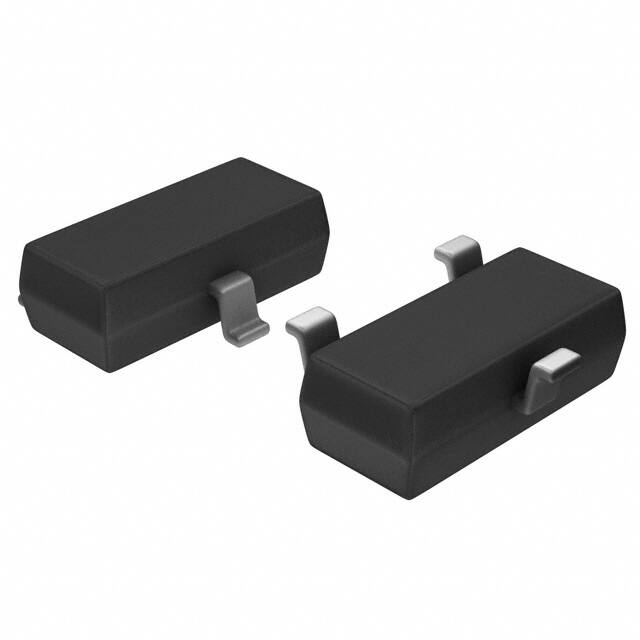
What do transistors do? Overall, today's electronics rely on transistors to amplify and switch signals. They regulate electrical power or signals for signal processing, power regulation, and switching in digital circuits. They also enable miniaturization for small, powerful devices, including smartphones, computers, and embedded systems.
To fully understand "what do transistors do?" we need to know what transistors are first. This article will explore the world of transistors, giving you a clear guide to the role of transistors in advancing communication, computing, and automation technologies.
Transistors Explained
1. What Are Transistors?
Transistors are semiconductor devices that are usually made of Si, sometimes germanium, or gallium arsenide (GaAs). A transistor may have three layers of semiconductor material for two p-n junctions. They are either n-p-n or p-n-p. These transistor types can amplify and switch electronic signals since they control electron and hole movements within the layers.
Moreover, transistors can operate in the active, saturation, and cutoff regions, which determine their behavior as amplifiers or switches. This precise current flow control is key to their function in electronics.
2. Why Are Transistors Important?
Transistors make up modern electronics. They help create important electronic components, like ICs and microprocessors for computing technology. Furthermore, transistors enable downsizing, high-speed, and energy-efficient electronics. They replaced bulky vacuum tubes for dependability, compactness, and power savings.
Transistors are also key to digital electronics for binary switching and logical operations in computing. Their ability to amplify signals is important for communication, medical, and audio technology. Nanotechnology has further heightened transistor capabilities for integrating billions of transistors on a single chip, which is a huge advancement in increasing computing power and efficiency.
3. What Are the Two Basic Types of Transistors?
Transistors have 2 common types: the BJT (Bipolar Junction Transistor) and the FET (Field-effect Transistor). They have different structures and functions.
Terminals on BJTs are the emitter, base, and collector. The majority carriers (electrons or holes) are injected from the emitter to the base, which are finally collected by the collector. Such a working mechanism enables BJTs to amplify the electronic signal and control the current.

Product shown in the picture: BC817-40
Meanwhile, FETs have source, gate, and drain terminals. They control the current flow from the source to the drain by changing the voltage applied at the gate. FETs, including JFETs and MOSFETs, suit digital circuits due to their high input impedance and reduced power demands.

Product shown in the picture: MRFE6VP100HR5
4. What Are the Functions of a Transistor?
What do transistors do? Different types of transistors have their own unique functions. Generally, transistors work as amplifiers and switches/gates.
As amplifiers, they increase the signal power in audio devices, radio transmitters, and other communication equipment. They amplify using a small input current/ voltage at the base or gate to control a larger current flow/ voltage between the collector and emitter, or source and drain.
As switches, transistors can turn on and off rapidly in digital circuits and microprocessors. They switch while transitioning between the cutoff region and the saturation region.
Also, transistors are employed in signal modulation, voltage regulation, and oscillation generation. They are essential to enable challenging electronic circuit operations that power anything from primary home devices to colossal computer systems.
Transistor Questions and Answers
After figuring out the question (What do transistors do?), let's focus on other FAQs about transistors to have a more comprehensive understanding.
1. What Are Transistors Made Of?
Transistors are made of semiconductors. Silicon is the most popular due to its affordability, electrical qualities, and production scalability. In addition to silicon, germanium was used in early transistor designs. Now, innovative transistors use compound semiconductors, including GaAs and InP, for high-speed and high-frequency applications. They provide better electron mobility than silicon.
Notably, researchers are exploring graphene and carbon nanotubes, which may enable even smaller and more efficient transistors due to their electrical properties. Moving to these materials could reform the future of semiconductor technology.
2. How Small Can Transistors Get?
The size of a transistor has reached the nanometer scale. It is reported that the smallest transistor can be as small as 1 nm.[1] However, the typical size of transistors ranges from 5 to around 10 nm. As we approach physical and quantum mechanical limits, new attempts can be made to achieve more sophisticated functionalities with higher efficiency and lower power consumption.
3. How Many Transistors Are in a CPU?
Current CPUs can contain billions of transistors, owing to upgraded manufacturing processes and designs. For instance, Apple's M4 chip (on a second-generation 3-nanometer technology) integrates 28 billion transistors.[2] It helps boost power efficiency and achieve a thin design for the device.
Conclusion
Now, you may have a relatively clear understanding of the question: "What do transistors do?". With their huge significance, knowing where to find top-rated transistors can help you develop electronic devices with leading performance.
AIChipLink sources and distributes millions of electronic components, including those that are hard to find. Our partnerships with 3000+ leading manufacturers can ensure you get the authentic and leading electronic parts you want. Contact AIChipLink to enjoy a convenient and high-quality purchase. We may have the right electronic parts you have been searching for for a long time!
Reference Link:
[1] U.S. Department of Energy/ 2017, "Smallest Transistor Ever". Available at: https://science.osti.gov/bes/Highlights/2017/BES-2017-04-c (Accessed on July 25, 2024)
[2] Apple/ 2024, "Apple introduces M4 chip". Available at: https://www.apple.com/ml/newsroom/2024/05/apple-introduces-m4-chip/ (Accessed on July 25, 2024)
Written by Jack Zhang from AIChipLink.
AIChipLink, one of the fastest-growing global authorized electronic component distributors in the world, offers millions of products from thousands of manufacturers. Whether you need assistance finding the right part or electronic components manufacturers for your design, you can contact us via phone, chat or e-mail. Our support team will answer your inquiries within 24 hours.












